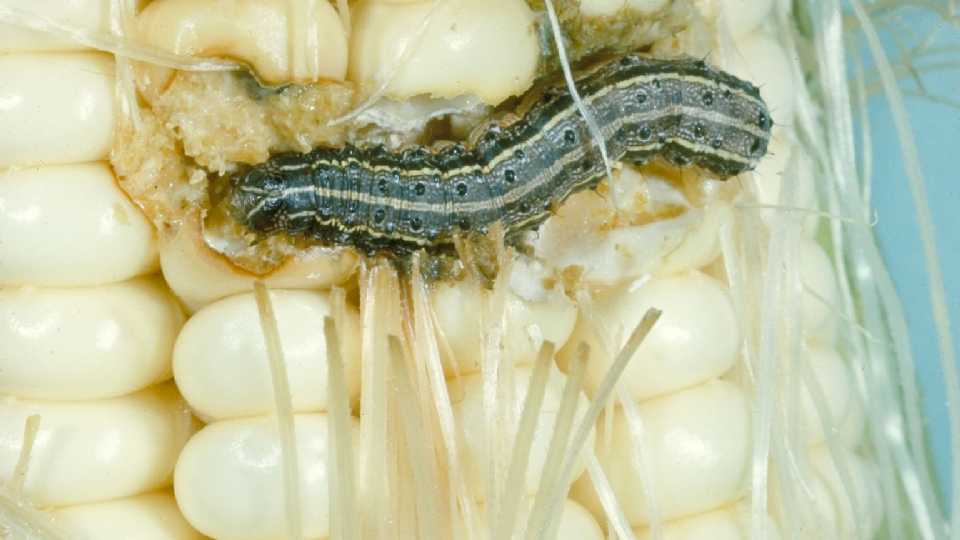Stop Fall Armyworm from Getting the Drop on Your Sweet Corn Crop

Photo by Phil Sloderbeck
Pest Specs
The fall armyworm (Spodoptera frugiperda) is the most important pest for corn in Florida. The larvae feed on leaf tissue and burrow into ears and feed on kernels. The pest can cause extensive damage to corn crops. The pest is around the whole year and most numerous in the fall and late spring.
Identification
The fall armyworm is native to warmer regions of the western hemisphere from the U.S. to Argentina. In the U.S., it overwinters successfully only in South Florida and southern Texas.
In the second instar, the dorsal surface of the body becomes brownish, and lateral white lines begin to form. During the fourth to the sixth instars, the head is reddish brown and the body bears white subdorsal and lateral lines. The face of the mature larva is marked with a white inverted “Y” and the epidermis of the larva is rough or granular in texture. Larvae tend to conceal themselves during the brightest time of the day.
Adults are nocturnal and are most active during warm, humid evenings. The moths are fairly large. In the male, the forewing is gray and brown, with white spots at the tip and center of the wing. The forewings of females are grayish brown and less distinctly marked. The hind wing is silver-white with a narrow dark border. This fall armyworm has very wide host range, but prefers grasses.
Young larvae initially consume leaf tissue from one side, presenting a “window pane” effect. Feeding in the whorl of corn often produces a characteristic row of perforations in the leaves. Older larvae cause extensive defoliation, often leaving only the ribs and stalks of corn plants, or a ragged, torn appearance.
When the larvae are very numerous, they defoliate the preferred hosts, acquire an “armyworm” habit, and disperse in large numbers, consuming nearly all vegetation in their path.
Survival and Spread
The fall armyworm is a strong flier and disperses long distances during the summer. The life cycle is completed in about 30 days during the summer, but is extended in cooler weather.
Moths deposit 150 to 200 eggs in a single layer attached to foliage and covers them with scales from her abdomen imparting a furry appearance to the egg mass. Eggs hatch in two to three days.
There usually are six instars in fall armyworm. Duration of the larval stage varies from 14 to 30 days depending weather. Pupation takes place in the soil.
Life span of adults range from seven to 21 days.
Management Methods
Moth populations can be sampled with a blacklight and/or pheromone traps. Numerous species of parasitoids affect fall armyworm; however, few act effectively enough to prevent crop injury.
Typically, insecticides are applied to sweet corn to protect against damage by fall armyworm, sometimes as frequently as daily during the silking stage. Because larvae feed deep in the whorl of young corn, a high volume of spray may be required to obtain adequate penetration.










